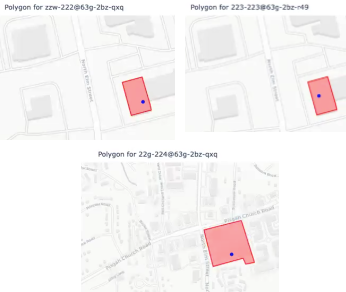Discussions
POIs Sharing the Same Building Polygon | Double-Counting Issues in Advan Research Weekly Patterns data
Hello,
I am working with Advan Research Weekly Patterns data and have observed that several POIs share identical values for both raw_visit_counts and visits_by_day across all weeks. Upon closer inspection, I found that these POIs also have identical values in the polygon_wkt column, indicating they occupy the same building footprint. It also cannot be the case that the data corresponds to just one of them, as some of these POIs are not open on weekends but still show visits—likely because visits to nearby POIs with similar polygon boundaries are being attributed to them.
Additionally, I’ve noticed some placekeys have a polygon_wkt that represents a larger area encompassing multiple smaller polygons. In such cases, the raw_visit_counts for these placekeys are often significantly higher—typically equal to the sum of the counts from the individual POIs they contain.
For a concrete example, in the figure below, the POIs with placekeys zzw-222@63g-2bz-qxq and 223-223@63g-2bz-r49 have identical polygons and the same raw_visit_counts across all weeks, even though they represent distinct locations with different NAICS codes. In contrast, the POI with placekey 22g-224@63g-2bz-qxq corresponds to a larger polygon that includes the two mentioned earlier, and its raw_visit_counts are much higher.

Thus, I have two questions:
- If one is aggregating visits to a geographic unit (such as a Census Block Group), should special care be taken to avoid double-counting visits to POIs with overlapping or identical polygons? If so, what approach would you recommend for aggregating total visits to a CBG while minimizing the risk of double-counting?
- When multiple POIs share the same polygon and have identical visit counts, how can we determine the actual number of visits to each unique placekey within the building? Is there a method (such as a NAICS code-based weighting scheme) to distribute the total visit count across the individual POIs?
A response to these would be critical for our research studying mobility patterns across a larger geographical region. My apologies if this question has been addressed before.
Thanks in advance
Venktesh